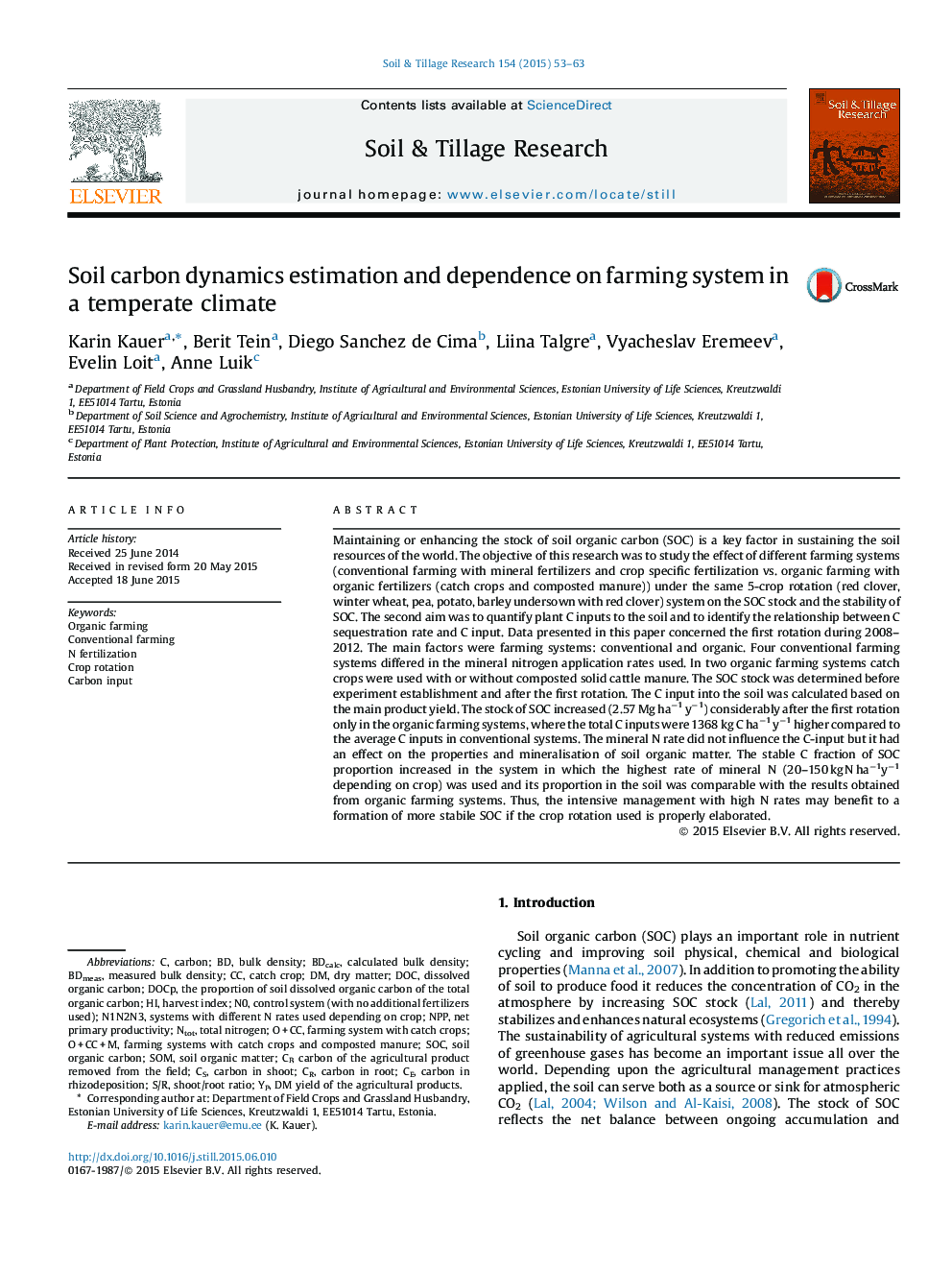| Article ID | Journal | Published Year | Pages | File Type |
|---|---|---|---|---|
| 305444 | Soil and Tillage Research | 2015 | 11 Pages |
•Farming systems did not have an impact on crop-specific C-input into the soil.•The dynamics of SOC stock after the crop rotation depended on farming systems.•Catch crops and manure in the rotation increased the SOC stock and the percentage of more stable C fraction in the SOM.
Maintaining or enhancing the stock of soil organic carbon (SOC) is a key factor in sustaining the soil resources of the world. The objective of this research was to study the effect of different farming systems (conventional farming with mineral fertilizers and crop specific fertilization vs. organic farming with organic fertilizers (catch crops and composted manure)) under the same 5-crop rotation (red clover, winter wheat, pea, potato, barley undersown with red clover) system on the SOC stock and the stability of SOC. The second aim was to quantify plant C inputs to the soil and to identify the relationship between C sequestration rate and C input. Data presented in this paper concerned the first rotation during 2008–2012. The main factors were farming systems: conventional and organic. Four conventional farming systems differed in the mineral nitrogen application rates used. In two organic farming systems catch crops were used with or without composted solid cattle manure. The SOC stock was determined before experiment establishment and after the first rotation. The C input into the soil was calculated based on the main product yield. The stock of SOC increased (2.57 Mg ha−1 y−1) considerably after the first rotation only in the organic farming systems, where the total C inputs were 1368 kg C ha−1 y−1 higher compared to the average C inputs in conventional systems. The mineral N rate did not influence the C-input but it had an effect on the properties and mineralisation of soil organic matter. The stable C fraction of SOC proportion increased in the system in which the highest rate of mineral N (20–150 kg N ha−1y−1 depending on crop) was used and its proportion in the soil was comparable with the results obtained from organic farming systems. Thus, the intensive management with high N rates may benefit to a formation of more stabile SOC if the crop rotation used is properly elaborated.
